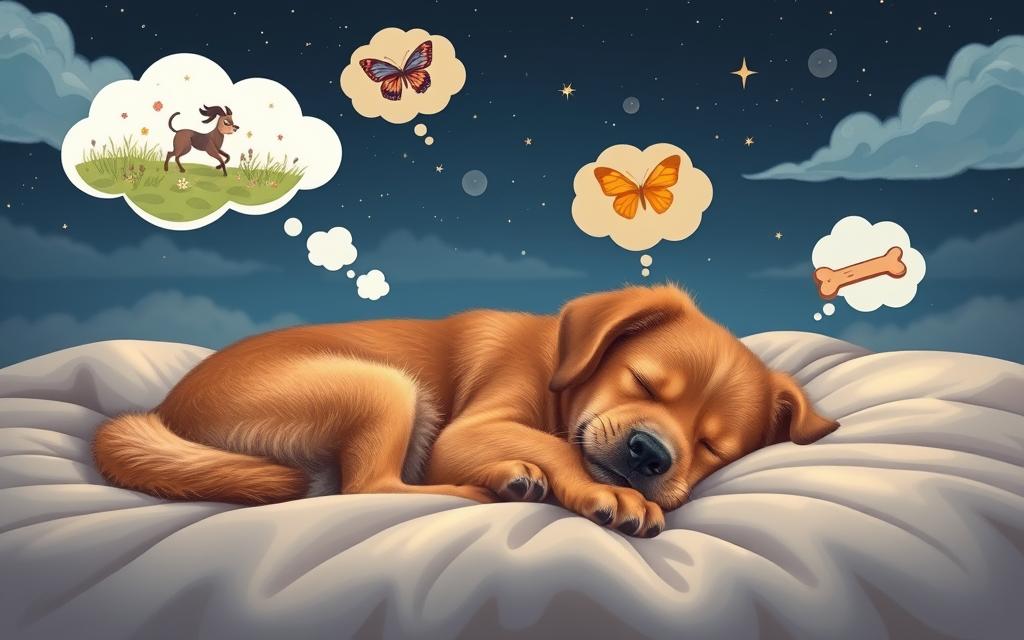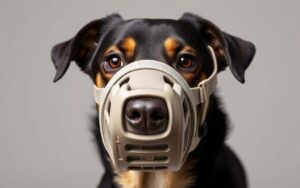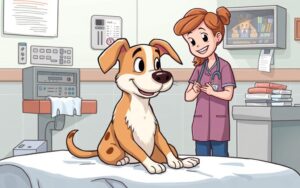
Does my dog dream. Ever wondered if your dog dreams when they sleep? It’s a question that has puzzled many. The answer is yes, dogs do dream, just like humans. Exploring their sleep patterns can give us a peek into their minds.
Key Takeaways: Does my dog dream
- Dogs experience different stages of sleep, including REM sleep when vivid dreams occur.
- Smaller dogs tend to have more frequent but shorter dreams compared to larger dogs.
- Certain breed-specific behaviors may be reflected in dogs’ dreams, such as Pointers “pointing” or Dobermans displaying guard behavior.
- Monitoring a dog’s sleep patterns can provide clues about what they may be dreaming about.
- Allowing dogs undisturbed sleep is important, as waking them from a nightmare can lead to aggressive reactions.
Understanding the Science Behind Dog Dreams
Dogs, like humans, go through different sleep stages. They have slow wave sleep (SWS) and rapid eye movement (REM) sleep. In SWS, the brain is quiet, but the muscles are active, making it easy to wake them up.
REM sleep is when the brain is more active, and the muscles relax. This is when dogs have vivid dreams.
The Science of Dog Sleep Cycles
Studies show that dogs’ brain activity during REM sleep is similar to humans’. This means dogs do dream. They spend about half their day sleeping, going through different sleep stages.
- Dogs have more sleep cycles than humans, but each cycle is shorter.
- Smaller dog breeds, like Chihuahuas, dream more often but for shorter times. Larger breeds, like Retrievers, dream less but for longer periods.
- In the last stage of sleep, dogs can have vivid dreams that last up to 30 minutes or more.
The study of dog sleep stages and dog brain activity during sleep is fascinating. It helps us understand our furry friends’ mental lives better. By learning about dog sleep cycles and REM sleep, we can appreciate their dreams more.
“Dogs and humans share 95% of the same genetic makeup, indicating similar biological processes for sleep and dreams.”
What do Dogs Dream About?
Dogs’ dreams are a mystery, but experts think they dream about their daily lives. Like us, dogs go through different sleep stages. The REM stage is when they have vivid dreams.
Studies on animals like rats show that their brains light up in REM sleep. This is similar to when they’re awake and doing familiar tasks. It suggests dogs dream about their daily experiences too.
Does my dog dream about chasing toys, playing with their owners, or exploring. These are common activities they do every day. The length and frequency of their dreams can change based on their age, size, and breed.
Puppies and older dogs dream more often than middle-aged dogs. Smaller dogs have shorter but more frequent dreams. Larger dogs have fewer but longer dreams. This is because of their sleep cycles and REM sleep patterns.
Watching our dogs sleep can give us clues about their dreams. Signs like rapid eye movement, twitching, and sounds like barking show they’re dreaming. These behaviors suggest they’re dreaming about their daily activities and experiences.
Learning about dog dreams helps us understand their inner lives better. It shows how important it is to ensure their well-being. This includes giving them a comfortable and safe place to sleep.
Does My Dog Dream?
Ever wondered if your dog dreams when they sleep? Yes, dogs do dream, and watching their sleep can tell us about their dreams.
When dogs enter the rapid eye movement (REM) stage of sleep, they might twitch, make sounds, or move their legs. This shows they’re dreaming vividly.
Signs Your Dog is Dreaming
- Twitching or jerking of the legs or body
- Whimpering, growling, or other vocalizations
- Rapid eye movement behind closed eyelids
- Paw movements as if running or playing
Watching your dog sleep can reveal what they dream about. For example, if they run in their sleep, they might be chasing a squirrel. If they seem upset, they might be having a bad dream.
| Breed | Dream Frequency |
|---|---|
| Toy Poodle | Once every 10 minutes |
| Golden Retriever | Once every 90 minutes |
Smaller dogs like Chihuahuas dream more often, about once every ten minutes. Larger dogs, like Golden Retrievers, dream less, about once every 90 minutes. Age also matters, with puppies and older dogs dreaming more than middle-aged dogs.
Understanding dog dreams helps us care for our pets better. It lets us know how to comfort them when they’re dreaming.
Factors That Influence Dog Dreaming
Dog dreaming is quite fascinating. Research shows that many things can affect how often and long dogs dream. These include their size, age, and breed. Each of these factors plays a big role in a dog’s sleep and dreams.
Dog Size and Dreaming
The size of a dog is a big factor in their dreams. Smaller dogs dream more often but for shorter times. Larger dogs dream less but for longer periods. This might be because of differences in brain activity and sleep patterns.
Age and Dreaming in Dogs
A dog’s age also affects their dreaming. Puppies and older dogs dream more than middle-aged dogs. This could be because their brains are still growing or slowing down. As dogs get older, their dreaming patterns may become more regular.
Breed Differences in Dog Dreaming
The breed of a dog can also change their dreaming. Different breeds do different things every day. This might show up in their dreams. For example, herding dogs might dream about sheep, while hunting dogs might chase prey. Watching your dog’s sleep can give clues about their dreams.
| Factor | Impact on Dog Dreaming |
|---|---|
| Dog Size | Smaller dogs have more frequent but shorter dreams, while larger dogs have fewer but longer dreams. |
| Dog Age | Puppies and senior dogs tend to dream more often than middle-aged dogs. |
| Dog Breed | Breed-specific daily activities may influence the content of a dog’s dreams. |
Understanding what affects a dog’s dreams can give us insights into their minds. This knowledge helps us care for our dogs better. It supports their health and happiness.
Nightmares and Disturbing Your Dog’s Sleep
Dogs can have nightmares just like humans. You might see them whining, growling, or twitching when they’re dreaming. But, experts say not to wake them up, even if they seem upset. Waking a dog can scare them and might even lead to a bite.
It’s better to let them sleep and comfort them when they wake up naturally. Dogs can have nightmares and night terrors. Nightmares can leave them feeling upset, while night terrors cause them to act out but they forget it when they wake up.
Signs of night terrors include violent movements, howling, and growling. If you see these, don’t wake the dog. Wait for them to wake up on their own. Then, comfort and reassure them. Understanding dog dreams and respecting their sleep helps them rest better.


















